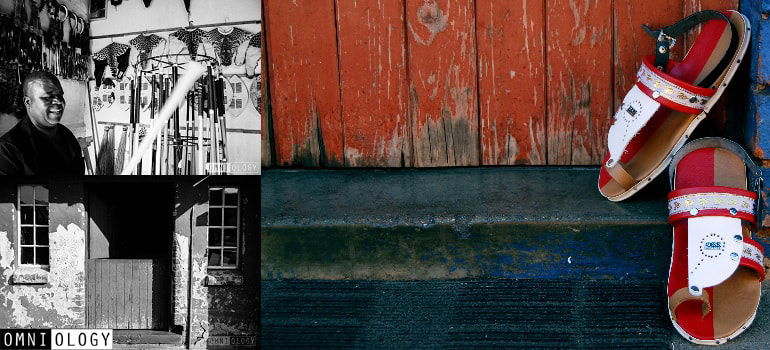|
Mai Mai is a traditional Zulu market situated in Johannesburg’s CBD down the road from the trendy Maboneng Precinct. When you arrive there, you’re likely to find a row of taxis being hand-washed outside the entrance while Maskandi music blares from their speakers. To the left of the market is a food area, tables and chairs set up in clusters and grills lined up underneath tin roofs with pigeons perched on top. Women with long skirts and painted faces sort through piles of raw meat. To the right of the market is an informal settlement — the dividing wall plastered with posters advertising live music performances by Maskandi artists. Walking further into the market space, there are makeshift stalls selling sweets and blankets, and cages stuffed with chickens stacked against a wall with a mural painting depicting a village scene. Further along still, some men play card games with MTN-branded playing cards, and others play checkers on tables constructed from cement blocks and chipboard. The air is thick with smoke, varnish, herbs, and stagnant drain water. When you reach the actual market — the small brick trading rooms that used to be stables for horses in the 1920s — you see a beer depot, a small dance space, coffins, animal skins, fighting sticks, pots, drums, beads, and branded car‑tyre sandals. Take note There are three distinct types of car-tyre sandals sold at Mai Mai: izingcab’lela (similar to ox-leather sandals that originated from KwaZulu-Natal), dabula izinzwane (meaning “cut between the toes”, worn by traditional dancers from nearby hostels) and izimbadada (branded fashion-statements). What makes these branded izimbadada so intriguing is that they make a very bold statement about branding. Each pair of shoes is sold for the same price, regardless of which brand they feature — whether it’s Nike or Lacoste, Puma or Adidas, Gucci or any other brand, it’s all the same. Brands here are all the same. They are assigned a collective identity: they all cue aesthetic value (stylish and trendy), economic value (branded items are known to be expensive), personal value (an expression of identity), and use value (an indicator of social status). Lesson 1: Understand the context of consumption Mai Mai market, as an example, shows us the impact migration may have on a person’s lifestyle, mindset and consumption behaviour. In an increasingly globalised world, we have access to more at an accelerated rate. Often, commodities act as a connection between ourselves and our environment — and so brands need to fight to stand out and stand for something among the clutter, chaos and confusion. They should also be adaptable to different contexts, not simply a global campaign transplanted into a local setting. Material culture gives symbolic meaning to human activities —Ian Woodward, author Lesson 2: Use material culture creatively The dancers and stick-fighters from nearby hostels refer to their wounds (obtained through fighting or dancing) as ‘decorations’ that hold the stories of their past experiences. Adornment plays a big role in ceremonies, celebrations and rituals the world over. Similarly, in everyday life, clothing is an expression and extension of our personal identity. In addition to this, brands enable us to renegotiate our external identity by adding messages and meanings to how we present ourselves and to the story we communicate about ourselves. Your body is the canvas of your life —Johnny Clegg, anthropologist Lesson 3: Know your consumer Mai Mai market shows us that global brands are aspirational, but that they lack individual meaning in this space. Consumers who frequent this market range from youthful newcomers to older regulars, from migrant workers to business professionals. They tend to be after the same thing: they are looking to maintain a connection between the two worlds they occupy: a fast-paced, ever changing, westernised, modern cityscape and a familiar, grounded, consistent traditional landscape. Global brands have the opportunity to acknowledge the consumer’s style, values and aspirations — and to respond in a localised, personalised, authentic way. Status symbols can serve expressive functions, relating to a person’s own style, taste or cultural values, as either real or aspired to — Erving Goffman, sociologist This article was published on Marklives
0 Comments
Leave a Reply. |
MARGUERITE COETZEE
ANTHROPOLOGIST | ARTIST | FUTURIST CATEGORIES
All
|

 RSS Feed
RSS Feed
